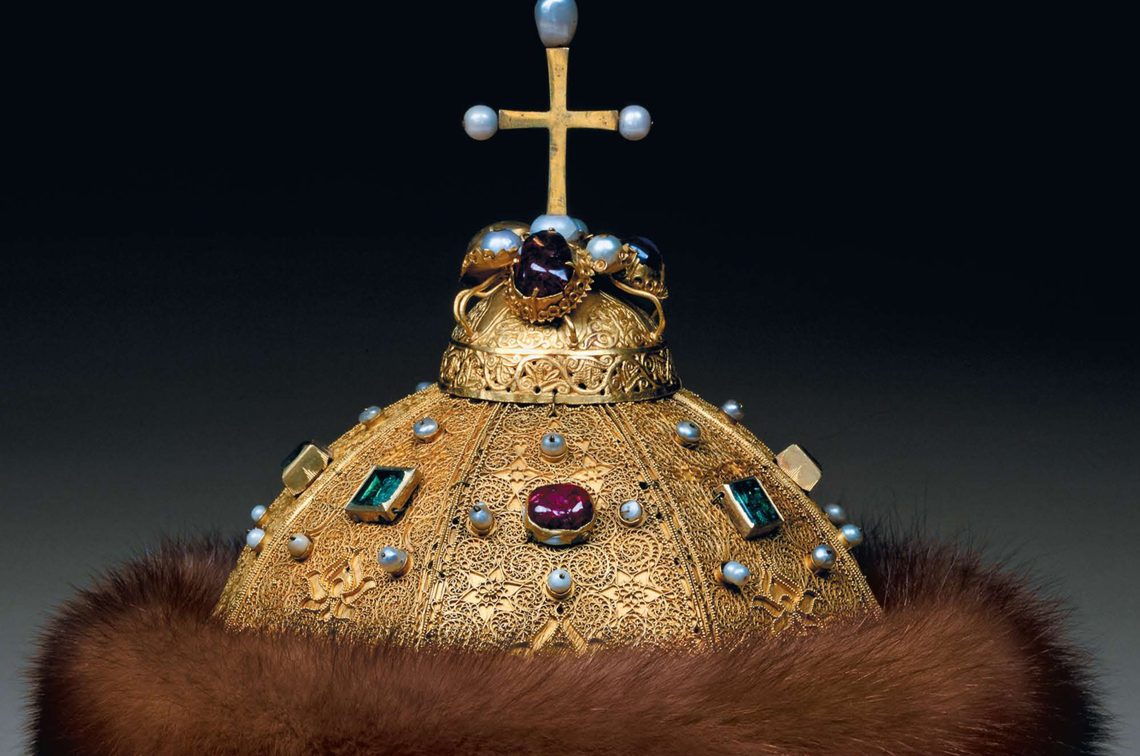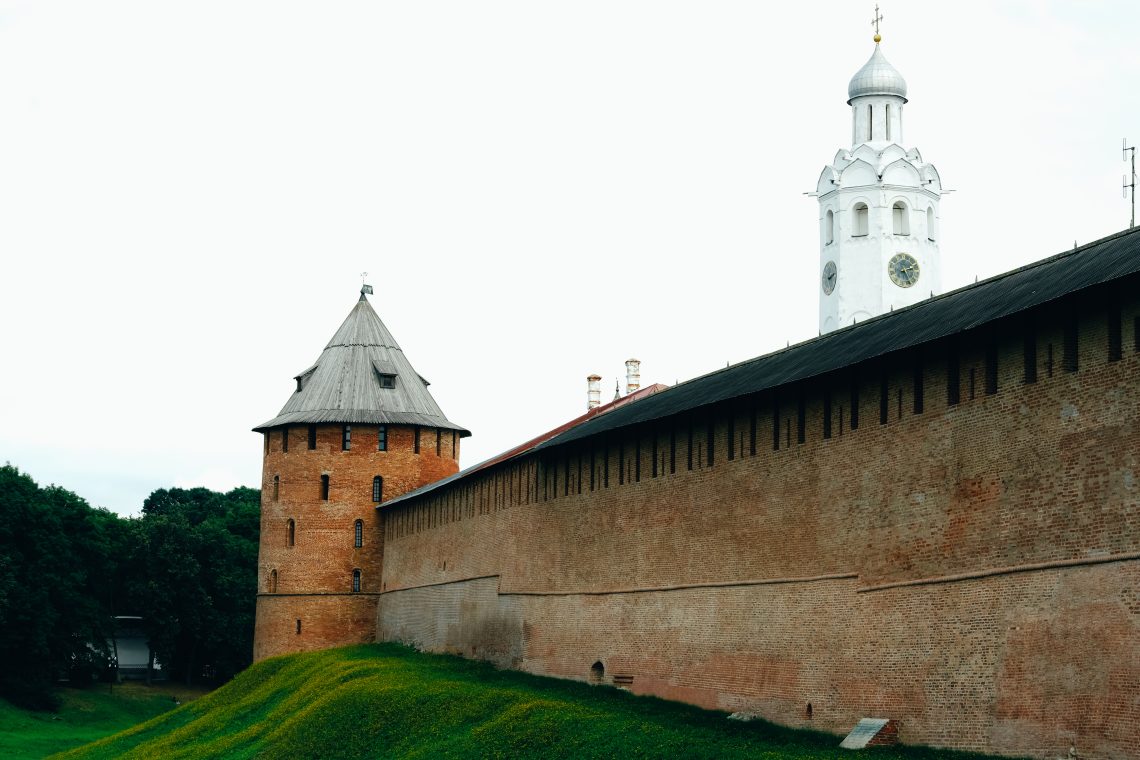What President Putin could have learned from history
Historical events show that Russia’s invasion of Ukraine is yet another catastrophic miscalculation by a ruthless autocratic leader.

In a nutshell
- Russia justified its invasion of Ukraine with spurious historical arguments
- Many of Moscow’s go-to nationalist myths do not hold water
- History shows that the Kremlin’s actions bode ill for Russia
Much has been said about how Russian President Vladimir Putin justified his assault on Ukraine with some incoherent ramblings about history. His main message was that Ukrainians constitute but an inferior part of the great Russian nation and that Ukraine does not have a right to exist as a state. French President Emmanuel Macron famously endured a five-hour-long session at the Kremlin’s long table, listening to this bizarre message.
But a serious reading of history reveals the opposite – a story that is highly flattering to Ukraine and shows Russia’s flaws.
A tale of three cities: Kyiv, Novgorod and Moscow
The early history of the Eastern Slavs features neither Russians nor Ukrainians. What came to be known as Kyivan Rus’ was a construct of Swedish Vikings, also known as Varangians. Although very little is known about this state, surviving names show that its early rulers were of Norse descent: Oleg (Helge), Igor (Ingvar) and Olga (Helga). Even the name “Rus,” which later evolved into “Russian,” was Norse (as illustrated by the Finnish name for Sweden: Ruotsi).
The Norsemen’s business model was to run a protection racket along the waterways from the Gulf of Finland to the Black Sea, giving the scattered Slav settlements a choice between paying tribute and being raided. Tribute thus extracted was brought to Kyiv, which served as the staging post for annual trading expeditions to Constantinople. This business was so profitable that by the turn of the millennium, Kyiv was one of the largest and wealthiest cities in Europe.
The legacy of statecraft that Russia inherited from Muscovy was defined by two centuries of interaction with the Mongols.
This state of affairs ended abruptly in 1242, when Mongol hordes laid waste to the city. It would be a century or more until organized society began to reemerge. Russian nationalist myths about a tradition stemming from Constantinople to Moscow must be taken with a pinch of salt. When Kyiv was destroyed, the world had not yet heard of Moscow. Its first mention in historical sources dates to 1147, as an insignificant outpost on the Moskva River.
The implications of depicting Moscow as Kyiv’s historical successor are clear. The onslaught of the “Mongol Storm” scattered the Eastern Slavs, and some did migrate toward what would become Muscovy. But what they brought with them had little to do with statecraft, or even with Orthodox Christianity.
Legacy from Kyivan Rus’
The famous “baptism” of Kyiv took place in 988, under Vladimir the Great. It took some time until the new religion crowded out local pagan beliefs, and then it was disrupted by the Mongols. Orthodoxy was brought to Muscovy in earnest only in the 15th century, not by Kyivans but Orthodox monks from Serbia and Bulgaria fleeing invading Turks.
The legacy of statecraft that Kyiv could have passed on to Muscovy was limited to market development. Kyivan Rus’ was a quasi-state whose princes were mainly focused on enhancing their trading operations. And Muscovy was a warrior state with little interest in trade. The assertion that Russian statehood dates back to Kyiv is therefore highly unconvincing. The legacy of statecraft that Russia inherited from Muscovy was rather defined by two centuries of interaction with the Mongols.

It was under the Mongol Yoke that Muscovy developed its distinctive form of autocratic governance. It was based on a form of political slavery that required even the most senior nobles to prostrate themselves before the Grand Prince.
They were allowed to engage in massive corruption, but keeping the loot was conditional upon blind loyalty. Given that the Mongols required Muscovite princes to offer their eldest sons as hostages, after a couple of generations, all Muscovite rulers would have spent their youth at the Mongol court in Sarai and would have known no other form of governance. This led to the emergence of the Mongol-Muscovite warrior state.
One legacy that Muscovy did import from Kyivan Rus’ was sedentary agriculture. While this form of sustenance made much sense in the fertile southern steppe, in the dark and barren forests of Muscovy it was a poison pill. Before the arrival of the Slavs, the local population were hunter-gatherers. The transition to slash-and-burn agriculture was a historic mistake. Combined with serfdom and the absence of rights to property, it would have serious long-term consequences.
By the time the Bolsheviks took power in Russia, Russian agriculture had still not achieved productivity levels of at least four grains harvested for one planted – which is deemed necessary for an economic takeoff. When Joseph Stalin embarked on mass industrialization, his solution was to use brutal violence against the peasants, causing death and destruction, including a politically induced “terror-famine” in Ukraine, the Holodomor of 1932-1933.
The fall of Novgorod
While Muscovy was being consolidated as an underdeveloped autocratic warrior state, Novgorod was thriving. Located at the northern end of Viking trade routes, known as the “road from the Varangians to the Greeks,” it was a trading state that interacted with the German Hanseatic League, exporting furs, wax, honey and other products of the forest. Its expanse stretched around and to the east of Moscow.
When Kyiv was annihilated by the Mongols, Novgorod was spared for unknown reasons. As a result, it could further develop its institutions of accountable government and rules-based market economy. The state was governed by a council that guaranteed contracts and property rights. It was unique in Europe in that women’s property rights were also secured.
Muscovy evolved as an autocratic warrior state that recognized no constraints on the ruler nor any rights to property for his underlings.
But the tragedy that befell Kyiv also eventually came down on Novgorod. Bent on conquest and expropriation, the rulers of Muscovy decided that Novgorod must be destroyed, and in 1470, Grand Prince Ivan III launched the first in a long series of attacks. The final cataclysm arrived in 1570, when Tsar Ivan the Terrible personally led his Black Guards, the dreaded oprichniki, in an assault that resulted in the bulk of the population of Novgorod being either killed or deported. Lands that were thus made vacant were conditionally granted to servants of the Muscovite ruler.
This cemented the evolution of Muscovy as an autocratic warrior state that recognized no constraints on the ruler nor any rights to property for his underlings. It was a pattern that would remain remarkably consistent over the coming centuries. President Putin’s relation to the present-day oligarchs is not much different from the relations between the Muscovite Grand Princes and their boyars.
The impact on Europe of the destruction of Novgorod was significant. Sources claim the Hanseatic League never really recovered from the loss of its eastern trade. English and German emissaries sent by their kings to take stock of the emerging new power in the east would depict Muscovy as a “rude and barbarous kingdom.” This also was the time when the Ukrainian nation began to emerge, with its own language and culture.
When Ivan III launched his first attack against Novgorod, the King of Poland, also Grand Prince of Lithuania, Casimir IV, was treaty bound to come to the rescue. Generations of Poles and Lithuanians would lament his failure to honor this obligation. It is tempting to speculate that if the Polish-Lithuanian Commonwealth and Novgorod had jointly stood up to Muscovy, Moscow might have remained an isolated outpost – while Novgorod and Kyiv could have emerged as successful European states.
Mongol headdress
A central feature of Muscovite mythmaking concerns the Cap of Monomakh. According to legend, this highly valuable artifact, still in the Kremlin Armory Museum, was a gift from the last Byzantine Emperor, Constantine XI Palaeologus, to be presented at the coronation of Prince Vladimir II Monomakh. It was a symbolic gesture of Orthodox Christianity being passed from Byzantium to Muscovy.
The myth is noteworthy because when Vladimir Putin celebrated his 50th birthday in 2002, he was presented with a replica of the Cap of Monomakh. What he may not know is that the cap was made not by the Byzantines but by the Mongols, and probably originated as a female headdress.
While Vladimir Putin was parading as the heir to Byzantium, with a double-headed Roman eagle in his imperial crest, he was in fact wearing a Mongol cap and would proceed to act like a Mongol ruler – bent on doing to Ukraine what his Muscovite predecessors did to Novgorod. But he failed miserably for two good reasons.
Vladmir Putin’s latter-day Muscovy will find itself increasingly exhausted by its attempt to destroy Ukraine and by its modern-day Livonian War.
One is that Russia has remained locked into its centuries-old Muscovite pattern of an economically backward warrior state, run by an autocratic ruler who allows his underlings to engage in massive corruption but awards them no property rights in their loot. The extent to which endemic corruption devastated Russia’s military capability came as a very nasty surprise.
The other is that Ukraine has emerged as a modern-day Novgorod, a trading state with an accountable democratic government and a rules-based market economy supported by a vibrant civil society. Historians will spend much time explaining how the basket case that was Ukraine in 2014 could be transformed into the success story that stood up to Russia in 2022. But no matter how, the achievement is real, and it has reordered global geopolitics.
Muscovy’s fate
The final lesson to be drawn from history is that when Ivan the Terrible died in 1584, Muscovy was so exhausted by its drawn-out campaigns to destroy Novgorod and by the Livonian War against Sweden and Poland-Lithuania that it collapsed shortly after. It would take 15 years for it to reemerge as the Russian Empire under the Romanov dynasty.
During this legendary Time of Troubles, there were numerous pretenders to the throne. Swedes seized Novgorod, and Polish forces entered the Moscow Kremlin. Estonia appealed to Sweden for protection and remained part of the Kingdom until 1721.
Vladmir Putin’s latter-day Muscovy may be looking at a similar fate. It will find itself increasingly exhausted by its attempt to destroy Ukraine and by its modern-day Livonian War.
Even if Russia manages to survive as a state, it will find that Mr. Putin’s actions have created unprecedented unity between Poland, Lithuania and Ukraine. A resounding victory for Ukraine could also cause the Lukashenko regime to collapse and Belarus to return to Europe, the combined effect of which will be to push the Western borders of Muscovy back to where they were drawn at the time of Ivan the Terrible. Quite an achievement for a man who claims to have learned from history.







